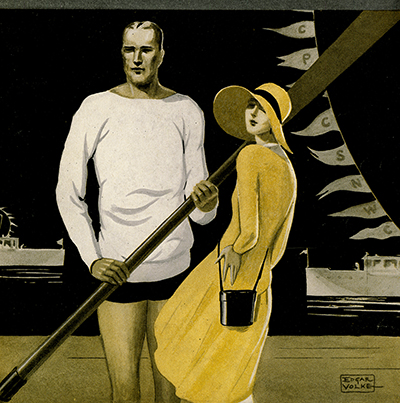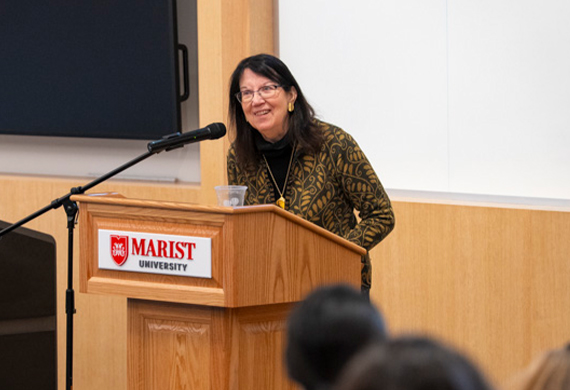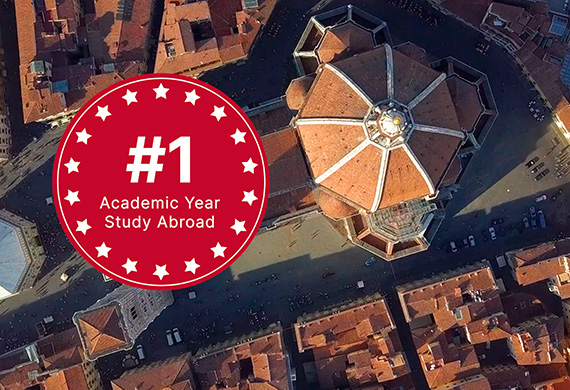New Online Exhibition Will Explore the Rich History of the Poughkeepsie Regatta

Organized by Marist College Archives and Special Collections, this comprehensive exhibit features over 1,900 photos, documents, and objects.
May 3, 2021—The average Hudson Valley resident is unlikely to know that the Hudson River was the site of the Poughkeepsie Regatta, a national collegiate rowing competition, for more than fifty years. A new, online exhibition organized and developed by the Marist College Archives and Special Collections takes a deep dive into the rich history of this annual event and its impact on the region.
The Exhibit
Comprised of more the 1,900 photographs, documents, and objects, the Marist exhibition is the most comprehensive examination ever of this historic event. The exhibition is the culmination of 20 years of collecting materials and eight years of meticulous documentation by Associate Librarian Elizabeth Clarke and Library Assistant Ann Sandri.
“Our hope is that through this site, we can share the story of this national collegiate event and its place amongst the rich history of the Hudson River Valley,” said John Ansley, Director of Archives and Special Collections.
The exhibition will be available beginning May 5 and will be a permanent part of Marist’s digital archives. Visit exhibits.archives.marist.edu/s/regatta/page/about.
The History
The Poughkeepsie Regatta was held on the Hudson River between 1895 and 1949. Originally started as the Intercollegiate Rowing Association Regatta, the event would eventually become known as the Poughkeepsie Regatta. In 1950, the Regatta moved to Ohio and it now rotates to various venues around the country.
The Intercollegiate Rowing Association (IRA) was formed in 1891 by Columbia University, Cornell University, and the University of Pennsylvania. They formed the Association in order to hold their own four-mile race between their Varsity 8 crews as they had not been allowed to participate in the competition between Harvard and Yale Universities held at New London, CT. In 1895, a section of the Hudson River between Poughkeepsie and Highland, NY was ultimately selected due to the relatively straight four-mile stretch of river, the sloping banks that allowed spectators to easily view the race, the ability to run an observation train for spectators along the course to view the race, and the neutrality of the course, it was not home to any university rowing teams.
Over time the event grew to include the United States Naval Academy and numerous west coast universities, including Stanford University of Washington, and the University of California, Berkeley. According to Ansley, the Hudson River became known as “the rowing capital of the world.”



